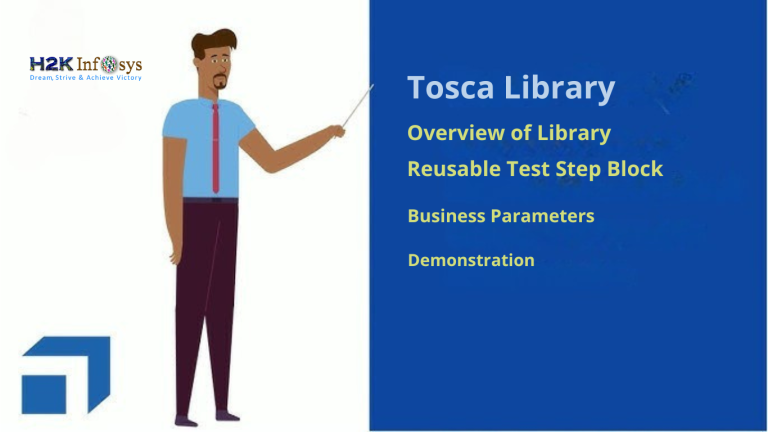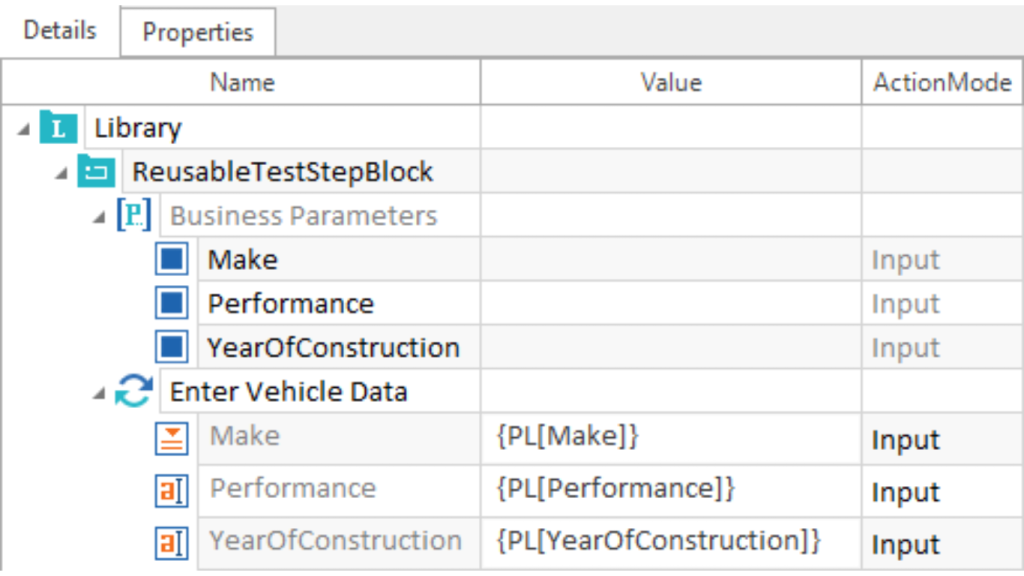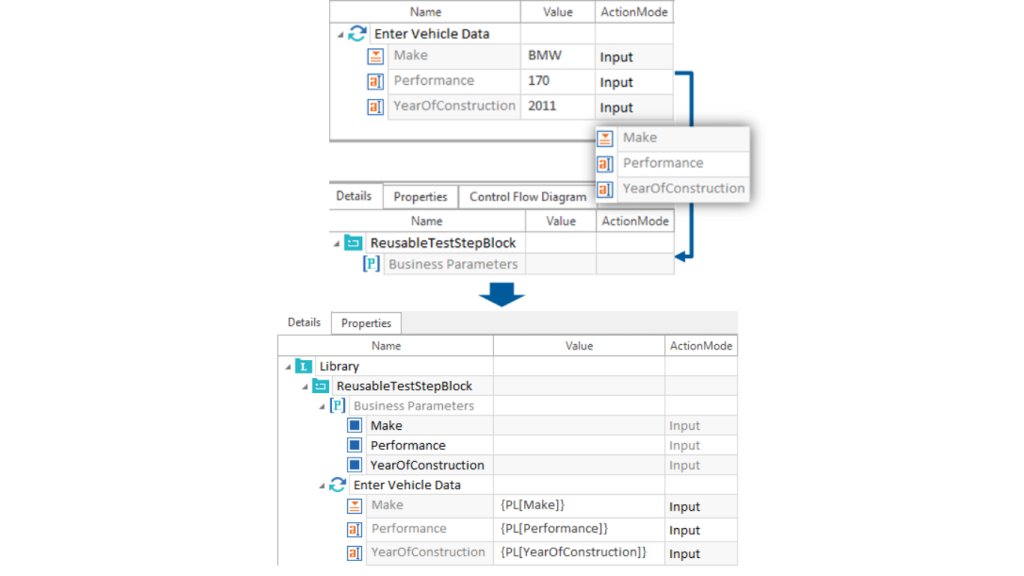Introduction
As software applications become increasingly complex, ensuring efficient and scalable test automation becomes more important than ever. Rewriting or duplicating similar test steps for every test scenario quickly becomes unmanageable. The answer? TOSCA Reusable Test Components.
With TOSCA Reusable Test Components, testers can streamline test creation by defining once and reusing test step blocks across multiple test cases. This concept promotes consistency, reduces redundancy, and makes maintenance a breeze.
Whether you’re exploring TOSCA Training Online, preparing for TOSCA Certification, or diving into a comprehensive TOSCA Automation Course, mastering reusable components is essential.
In this blog, you’ll discover how libraries, reusable test step blocks, and business parameters can revolutionize your TOSCA testing efforts. We’ll explore practical examples, such as login scenarios, and walk through real-time implementation steps, backed by insights from official documentation.
What Are TOSCA Reusable Test Components?
TOSCA Reusable Test Components are modular building blocks that can be used across multiple test cases. They consist of reusable test step blocks stored inside a library, making it easier to standardize repetitive actions like logins, navigation, and data validation.
Instead of rewriting the same login steps in 10 different test cases, you create a reusable block once and call it wherever it’s needed. These reusable components integrate seamlessly with business parameters, allowing dynamic data injection for greater flexibility.
Benefits of TOSCA Reusable Test Components
- Consistency: One update reflects across all usages.
- Efficiency: Reduce manual effort by reusing existing test logic.
- Maintainability: Easy to manage large-scale tests.
- Scalability: Adapt test components to new requirements without rebuilding everything.
TOSCA Reusable Test Components improve efficiency, especially for enterprise-grade projects with thousands of test cases. Implementing TOSCA Reusable Test Components ensures you’re building sustainable test automation frameworks.
Key Concepts: Library, TestStep Block, and Business Parameters
Library
A Library is a TOSCA folder designed to hold reusable elements, particularly TestStep blocks. It acts as a centralized repository.
TestStep Block
A Reusable TestStep Block is a group of test steps that perform a common function. These are stored in the Library and can be referenced in multiple test cases.
Business Parameters
Business Parameters make test steps data-driven. Instead of hardcoding values, you use placeholders like {PL[Username]} and {PL[Password]}. These parameters are defined at runtime or through test configuration.
When to Use TOSCA Reusable Test Components
Reusability is ideal in scenarios such as:
- Login and Logout steps
- Navigation across screens
- Data entry sequences
- Common validations (e.g., success message checks)
If a step appears in more than two test cases, consider making it reusable. Most teams rely heavily on TOSCA Reusable Test Components when dealing with regression testing and complex workflows.
Step-by-Step Guide: Creating Reusable Login Components
Let’s walk through creating reusable login functionality using TOSCA Reusable Test Components.
1. Create a Folder
Organize your reusable components inside a dedicated folder for clarity.
2. Create a Library
Right-click the folder > Select “Create Library”. This library will store your reusable test step blocks.
3. Create Reusable TestStep Library
Under the library, right-click > Create a “Reusable TestStep Block.”
4. Add Reusable Steps
Drag and drop the login steps from the Module (e.g., TBOX) into your new TestStep Block. These can include:
- Enter username
- Enter password
- Click login
5. Use Business Parameters
Replace hardcoded data with business parameters:
- Right-click the value field > Select “Create Business Parameter”
- Enter parameter name, e.g., Username
- It will auto-generate {PL[Username]} in the field
6. Add to Test Case
Drag the reusable TestStep Block into your test case. Apply the actual test data via test configuration.
7. Run the Test Case
Execute the test as normal. The reusable component behaves like any other set of test steps.
8. Resolve Reference (Optional)
To disconnect the test case from the library (if you want to edit it independently), right-click > “Resolve Reference.”
This approach ensures your login steps remain consistent across all test scenarios while staying easily maintainable. Another reason why TOSCA Reusable Test Components have become the preferred approach in modern test automation.
Referenced Documentation Insights
According to the Tricentis official guide, Reusable TestStep Blocks provide a structured method for:
- Storing blocks inside a Library
- Referencing them as instances in test cases
- Defining dynamic values through business parameters
Each reference to a reusable block is treated as a “link” rather than a copy. This makes it possible to update the original block and instantly apply changes across all linked cases.
Key Point: Once added to a test case, the reusable block can be updated only at the source level (i.e., Library). To make test-case-specific edits, the reference must be resolved. When using TOSCA Reusable Test Components, this separation of logic and data ensures better control.
Naming Conventions and Best Practices
When working with TOSCA Reusable Test Components, follow these tips:
Naming Tips
- Use clear names: e.g., Login_Reusable, Validate_SuccessMsg
- Prefix parameters: e.g., PL_Username, PL_Password
Organization Tips
- Group components by feature or module
- Avoid nesting too deep
Maintenance Tips
- Review reuse candidates periodically
- Document parameter usage within the block
Creating solid conventions early in your project helps maximize the potential of TOSCA Reusable Test Components.
Advanced Use Cases for Reusable Components
Data-Driven Scenarios
Instead of creating 10 login cases with different users, use one reusable block and feed it different data sets. The {PL[Username]} and {PL[Password]} parameters pull values dynamically.
Conditional Logic
Integrate conditional execution by using TOSCA conditions within the reusable component (e.g., only click ‘OK’ if error message appears).
Nested Reusable Components
You can even create nested reusable blocks. For example:
- Block A = Login
- Block B = Navigate to Dashboard (calls Block A inside it)
This boosts modularity and supports large-scale test projects.
With TOSCA Reusable Test Components, it becomes easier to design layered test flows that reflect actual user behavior across various modules.
Common Mistakes to Avoid
- Hardcoding test data inside reusable blocks (defeats the purpose of business parameters)
- Editing references directly instead of resolving them
- Duplicating blocks unnecessarily instead of updating the original
- Unclear parameter names that confuse testers later
Proper usage of TOSCA Reusable Test Components eliminates many of these issues.
Real-World Example: Banking App Login Flow
Let’s apply this in a real-world scenario.
Situation
You are testing a banking app. Login is required in 15 test cases.
Action
- Create Login_ReusableBlock
- Insert Username, Password, and Login Button
- Use {PL[Username]} and {PL[Password]} as placeholders
- Drag it into all 15 cases
- Configure credentials for each scenario
Result
You now maintain just one login block. If the login form changes, you only update it once.
This reflects the power of TOSCA Reusable Test Components. Your automation becomes faster, simpler, and far easier to scale.
Why It Matters for TOSCA Automation
TOSCA Reusable Test Components are a cornerstone of maintainable, scalable, and reliable test automation.
With libraries and parameters, your tests become:
- Cleaner
- Leaner
- Faster to execute and maintain
Incorporating this into your automation strategy is essential for staying competitive in enterprise-grade software testing. Testing teams that adopt TOSCA Reusable Test Components report significantly lower maintenance overhead and greater ROI.
Conclusion
Reusable components are not just a good-to-have feature, they are a best practice in test automation. With TOSCA Reusable Test Components, teams reduce effort, increase consistency, and accelerate project delivery.
Start organizing your tests with libraries, build reusable blocks, and inject them with dynamic business parameters. It’s the most efficient path to reliable TOSCA test automation. Whether you’re taking a TOSCA Automation Course, enrolling in TOSCA Training Online, or aiming for TOSCA Certification, mastering this concept is critical.
Ready to boost your TOSCA skills? Master TOSCA Reusable Test Components and elevate your automation.




























